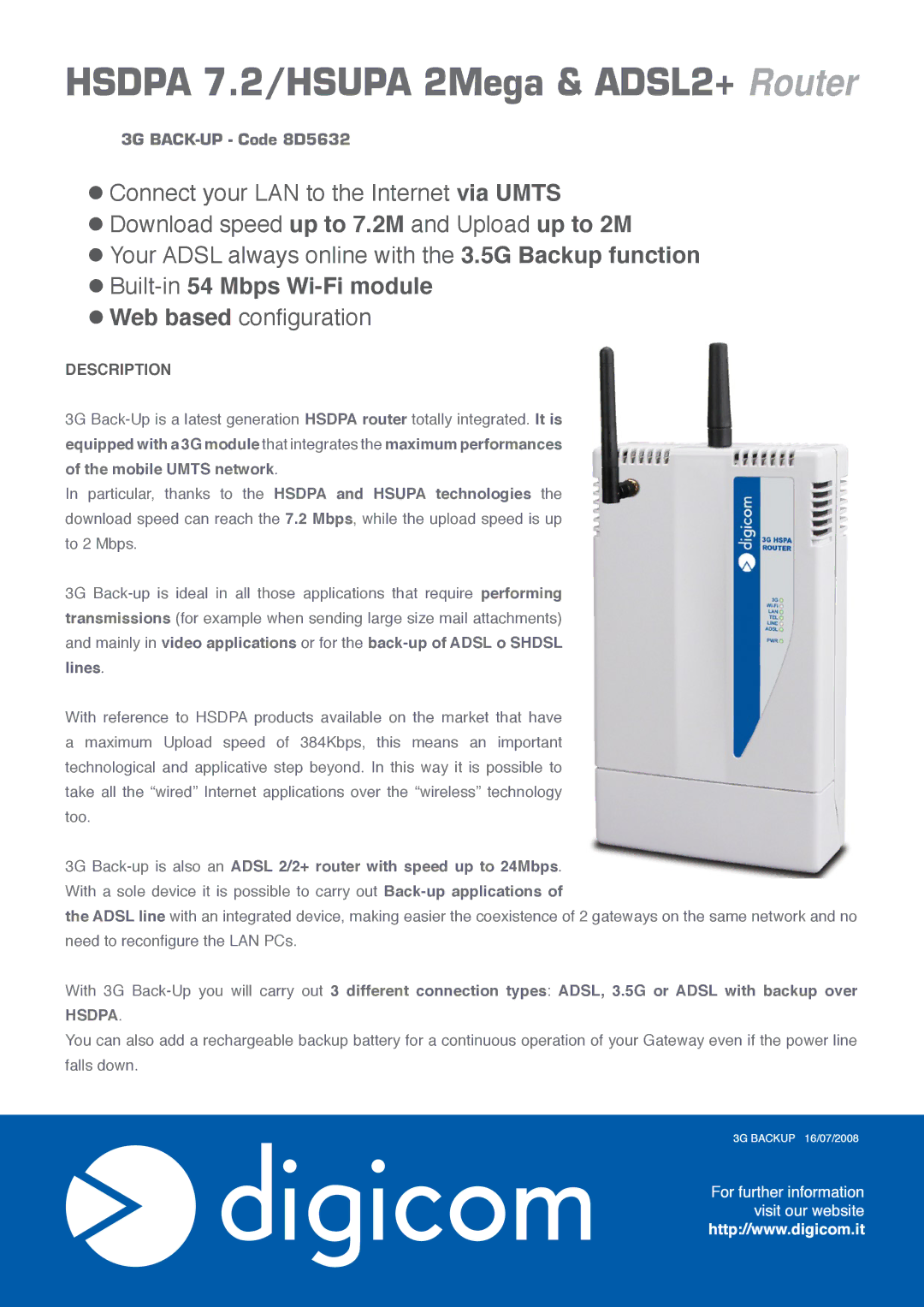HSDPA specifications
Digicom HSDPA (High-Speed Downlink Packet Access) is a cutting-edge technology designed to enhance mobile broadband services by providing users with faster data speeds and improved network efficiency. As an evolution of the Universal Mobile Telecommunications System (UMTS), HSDPA represents a significant leap in mobile communication capabilities, enabling users to experience seamless internet access and a wide range of multimedia services on the go.One of the primary features of Digicom HSDPA is its ability to support high data rates. HSDPA can deliver download speeds of up to 14.4 Mbps, which can be further enhanced with the introduction of HSDPA+ to reach rates of up to 42 Mbps. This higher bandwidth allows for smooth video streaming, rapid file downloads, and efficient web browsing, making it an ideal solution for both personal and professional applications.
Another key characteristic of HSDPA is its use of advanced modulation and coding techniques. The system employs a method called adaptive modulation and coding (AMC), which dynamically adjusts the modulation scheme based on the current channel conditions. This means that users can enjoy better connectivity and higher speeds even in areas with variable signal quality. Additionally, HSDPA employs a feature known as fast packet scheduling, which reduces latency and enhances the overall user experience by prioritizing critical data packets.
The technology also supports efficient resource utilization through its shared channel architecture. Unlike traditional circuit-switched networks, where resources are allocated in fixed blocks, HSDPA uses a packet-switched approach to allocate resources more flexibly. This allows multiple users to share the available bandwidth, making the system more efficient and enabling network operators to accommodate a larger number of subscribers without compromising performance.
Digicom HSDPA networks are designed to provide high reliability and resilience. The technology integrates seamlessly with existing UMTS infrastructure, allowing for smooth transitions between different data services. Furthermore, the system is built with backward compatibility, ensuring that users with older devices can still access services without significant issues.
In conclusion, Digicom HSDPA stands out as a robust solution in the realm of mobile broadband technology. With its high data rates, advanced adaptive features, efficient resource management, and compatibility with existing networks, it provides enhanced connectivity and a superior user experience for mobile users around the globe. As mobile data consumption continues to grow exponentially, HSDPA remains a vital component in delivering the fast and reliable internet services that users expect.

